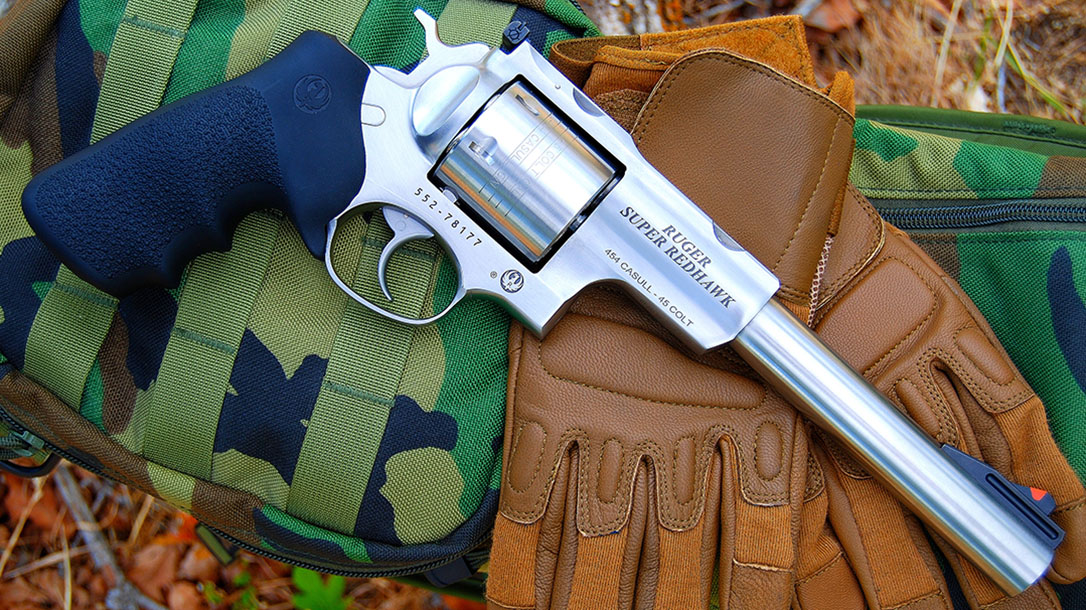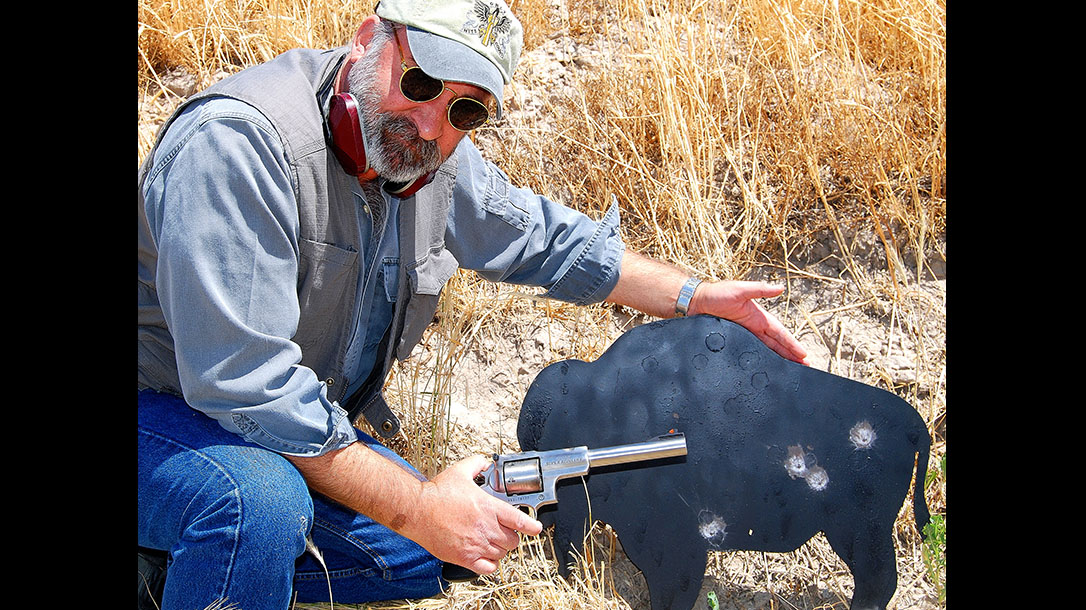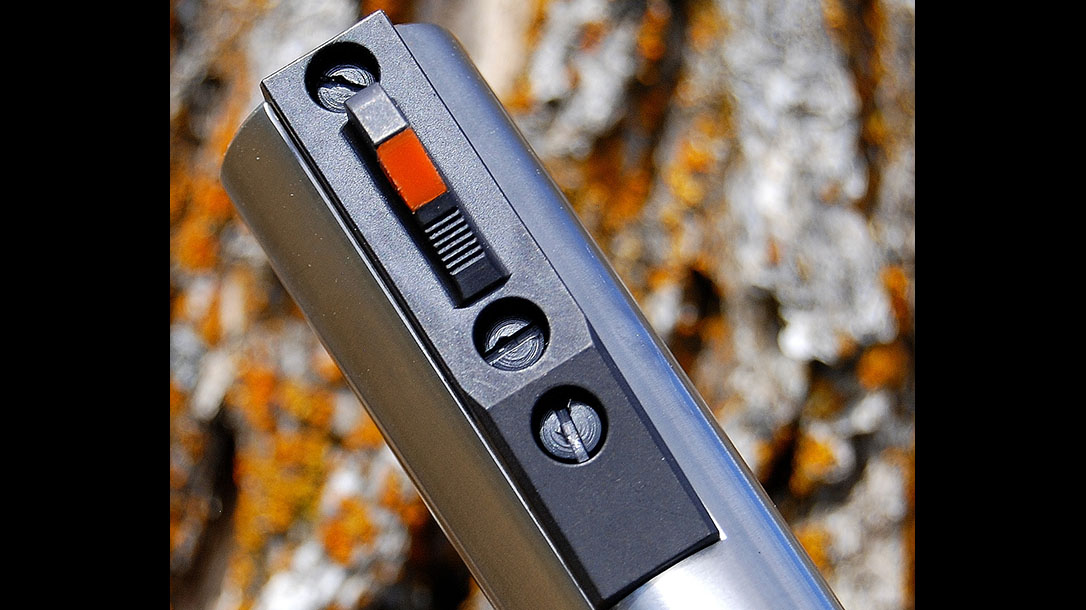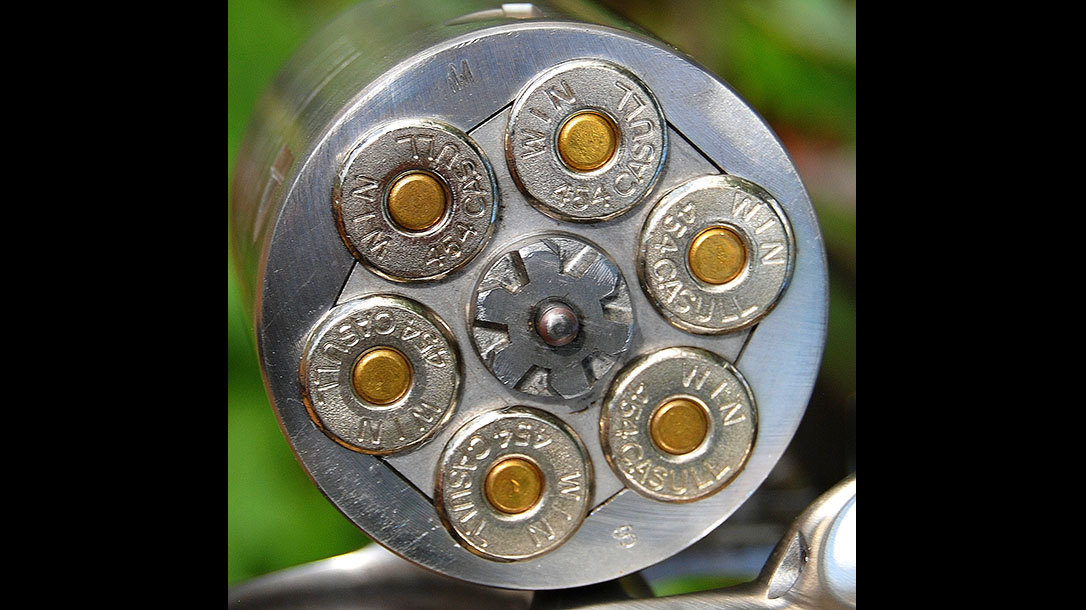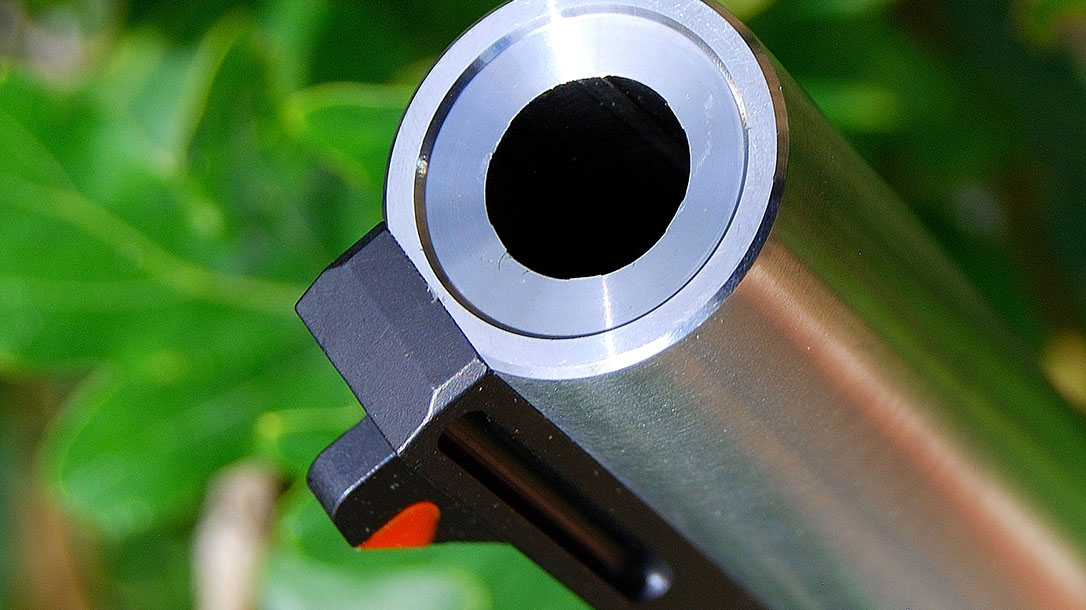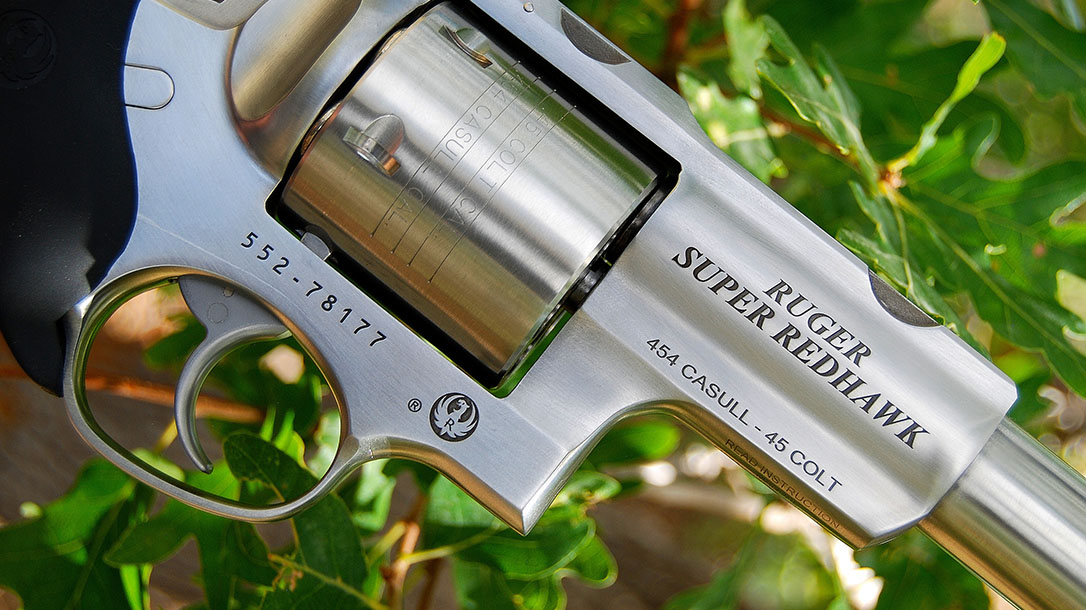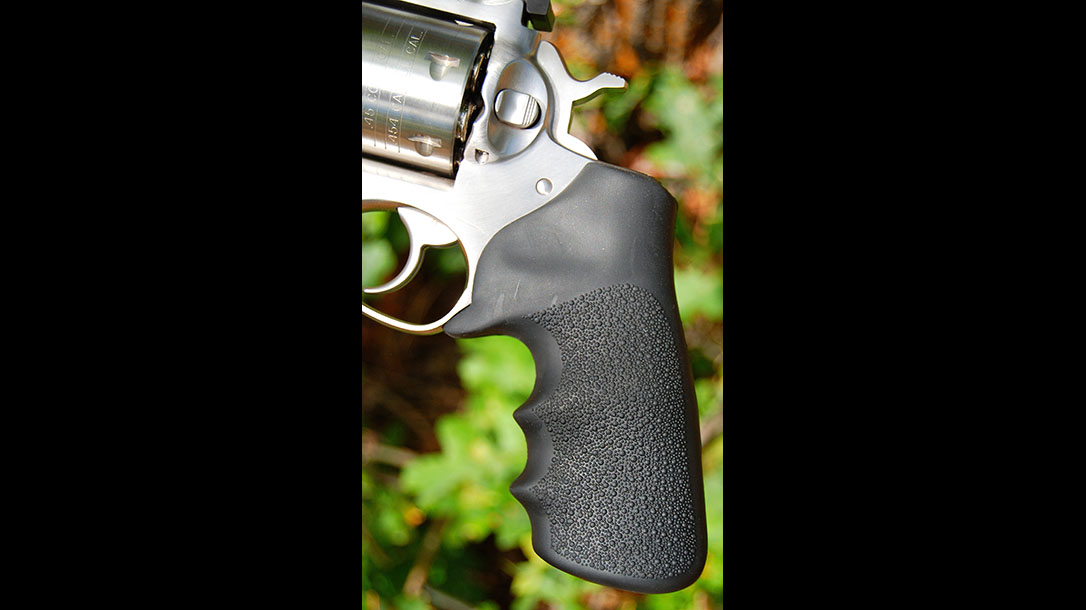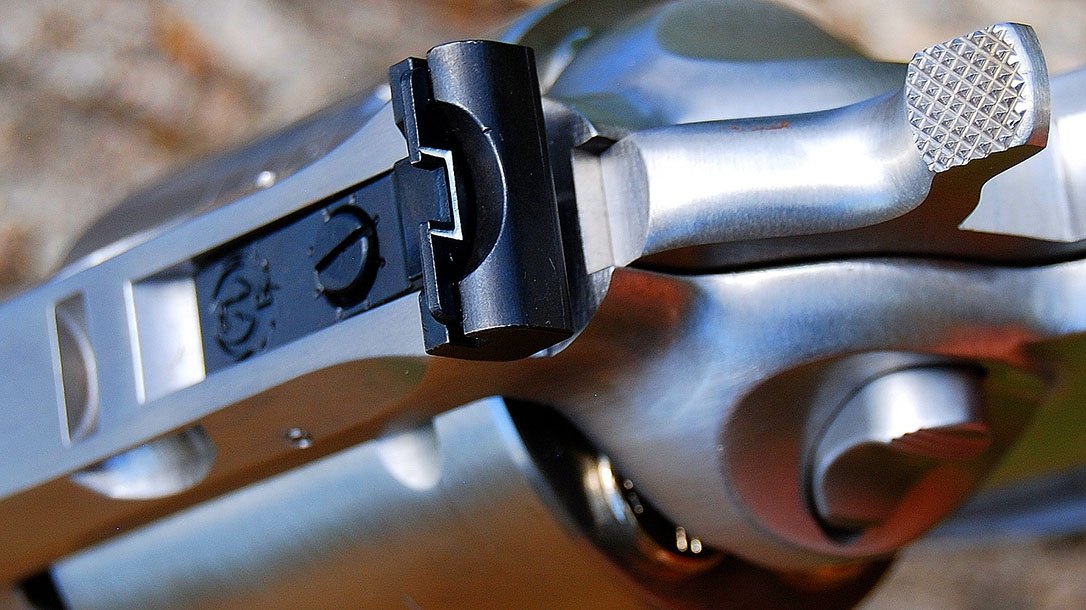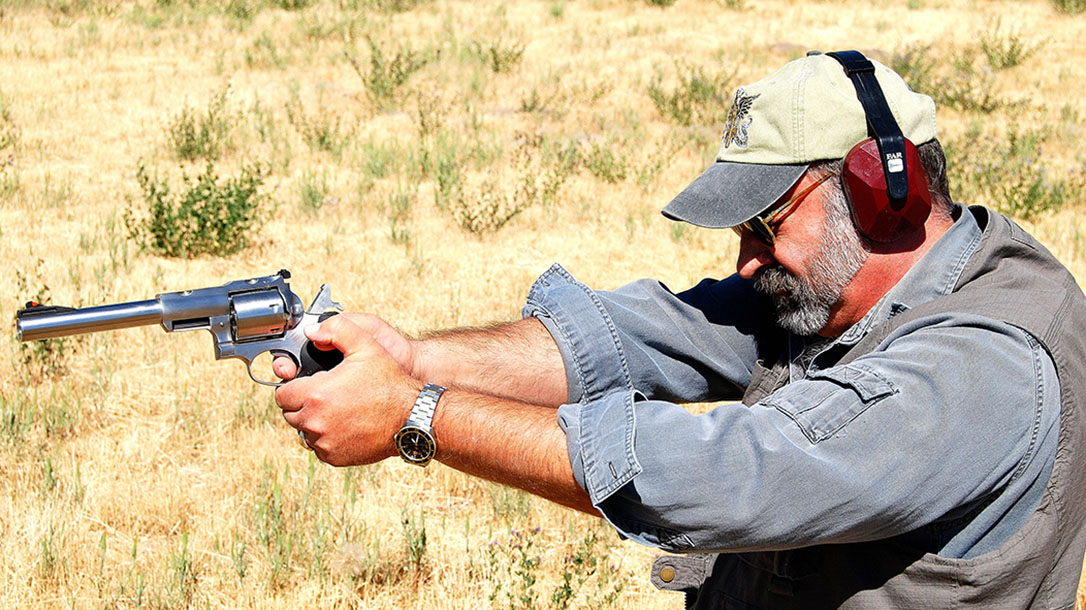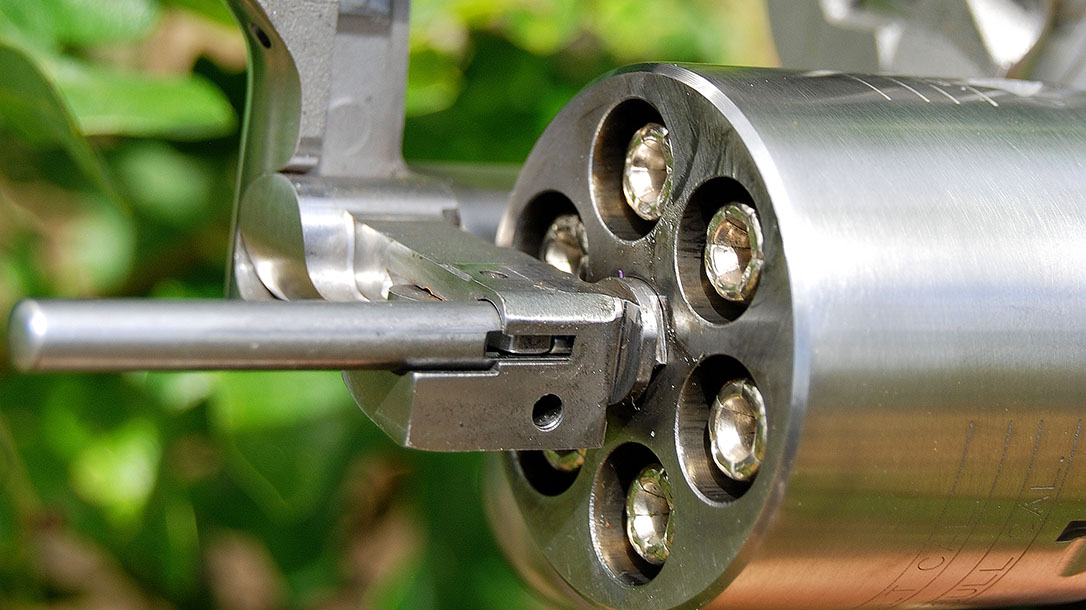When it comes to big-bore handgunners, Elmer Keith, with his much-publicized experiments in the 1940s and 1950s that eventually led to the introduction of the .44 Magnum by Smith & Wesson and Remington in 1955, gets the bulk of the press. Keith deserves the accolades, no question, but he’s not the only name that merits a look, and certainly not the only big-bore advocate who wasn’t satisfied with the conventional handgun performance levels of the day.
What Keith did in being instrumental to the development of the .44 Magnum was help to create a powerful cartridge that offered much more terminal energy and range than either of the two top cartridges of the time: the much respected .45 Colt from 1873 and the (still relatively new at the time) .357 Magnum from 1935. For Keith, the .45 Colt had the width and weight, but it couldn’t be pushed hard enough in the existing revolvers of the era because of relatively thin chamber walls and cartridge brass that limited pressures.
Advertisement — Continue Reading Below
The .357 Magnum, on the other hand, did have the steam necessary for flatter trajectories at longer distances, with correspondingly higher velocities and terminal energy figures, along with much thicker chamber walls in production revolvers and stronger brass cases that could safely contain the pressures. But the .357 Magnum wasn’t as effective for large game hunting use as Keith had determined calibers beginning with a “4” could be. The eventual result, after blowing up .45s and extensive tinkering with .44 Specials (because of the thicker chamber walls), was the .44 Magnum, the ceiling that the vast majority of handgunners were willing to tolerate in terms of recoil.
Pushing The Limit
Then along came Dick Casull, a Utah native who was even less satisfied with the status quo. Casull began his own trek into the uncharted wilderness of the true hand-cannon world that not only pushed the traditional .45-caliber envelope that Keith had abandoned, but utterly shredded that envelope forever.
After years of experimentation—first with standard Colts and standard Colt cases, then with specially built Colt and Ruger single-actions using stronger Casull-specific brass cases and a triplex powder charge (three different powders in the same case that burned progressively as the bullet travelled down the bore)—the new wildcat .454 Casull was co-developed in 1957 with Jack Fulmer and introduced to the world in November of 1959.
Advertisement — Continue Reading Below
Billed for many years as the most powerful handgun caliber in existence (Dirty Harry was mistaken about his S&W .44 Magnum), since then the cartridge has picked up momentum as Freedom Arms, Ruger and Taurus began chambering large-frame revolvers capable of standing up to its 65,000-psi pressures, and today there are several commercial loads available for it in a variety of bullet weights and styles. Even though it’s been surpassed by heavier handgun calibers, the .454 Casull is the most popular mainstream heavy artillery for those finding the .44 Magnum to be just a trifle on the tame side for large critter territory.
Super-Sized Hawk
First introduced in late 1987 as a beefed-up version of the original 1979 double-action, large-framed, six-shot Redhawk, the Super Redhawk, with either a 7.5- or 9.5-inch barrel, was built as a heavy-duty .44 Magnum revolver largely for the hunting crowd, with an extended frame snout and milled slots up top for the proprietary Ruger scope ring mounts included with each gun.
The Super Redhawk also featured a different internal design than the original Redhawk, with essentially an up-sized GP100 action that can allow a better trigger pull with its individual hammer and trigger springs than the Redhawk’s single spring, which powered both the hammer and the trigger return. The Super Redhawk also uses the same abbreviated grip “strut” with an enclosed hammer spring as the GP100, allowing for more grip options than the more conventional, fully contoured Redhawk grip frame. In fact, the Super Redhawk and the GP100 can share the same grips interchangeably.
Advertisement — Continue Reading Below
Hunting Companion
There are very few factory-produced revolvers that can safely contain the .454 Casull pressures—the Freedom Arms single action of 1983 was the first, with a five-shot cylinder to maintain sufficient cylinder wall thickness. In 1997, using a special alloy and heat-treating process on the cylinder, Ruger brought out the first double-action .454 Casull revolver with its 7.5-inch-barreled, stainless Super Redhawk variant with the company’s “target grey” finish.
Since then, while sales in the caliber have never set any barns to burning, the .454 Super Redhawks have been popular enough among hardcore handgun hunters and those who share homesteads with unpredictable bruins to keep them in the lineup, and the Ruger website currently shows two .454 versions in satin stainless: the Alaskan model with a 2.5-inch barrel and the full-sized Super Redhawk with a 7.5-inch barrel and a black rubber Hogue Tamer grip. If you hunt hard and long with a handgun, this hefty revolver and caliber combo offers performance and durability you should be taking a look at.
Closer Look
In its latest configuration, the .454 Super Redhawk incorporates the recent recoil plate/firing pin retention upgrades common to all of Ruger’s steel-framed DA revolvers, involving a screw-in plate (firing pin bushing) that’s then pinned, which Ruger says is much more consistent than the older press-fit plate versions. The target grey finish is gone, along with the original plunger-powered interchangeable front sight, which is now a much longer, one-piece base/blade made of steel with a red/orange insert. The sight is solidly attached to the barrel with three slotted-head screws.
Advertisement — Continue Reading Below
Ruger shows sight options for Super Redhawks manufactured after August of 2013 that include 0.61- and 0.533-inch-high red inserts, two green fiber-optics in the same heights and one 0.533-inch-high, Patridge-style brass bead, all for the same $30 price through its website. The rear sight is a white-outline blade in Ruger’s fully adjustable steel base. Ruger’s “pin-less” ejector star is now standard, and another update that’s also common to the steel DA revolvers across the board is the smooth-faced MIM trigger, with larger- frame models like the GPs and Redhawks still retaining their traditional cast hammers.
More Details
Otherwise, the .454 Casull Super Redhawk is one sizable chunk of ordnance, weighing in at 1.5 ounces short of 3.5 pounds unloaded. Graceful and svelte do not apply as descriptors here. Solid, hefty and bet-your-life-rugged do. The sharply checkered hammer gives a non-slip thumb-cocking surface. Ruger’s transfer bar safety has you covered if you do somehow manage to lose control of that hammer. The MIM trigger has no sharp rear edges to pinch the finger in DA use, which may not be an issue for you, but it is for me. The DA pull is stiff but smooth, with a noticeable stacking stop toward the last 0.125 inches of hammer travel as the cylinder locks in place. This allows you to stage the trigger if you choose. On my test sample, the very passable single-action pull weighed 4.75 pounds and exhibited no creep and only a miniscule amount of overtravel.
A good gunsmith could take that SA pull down further, but believe me—on a kicker like this one, you do not want to take it down too far. A hunting revolver needs a clean trigger for longer-range accuracy, but a .454 does not need one so light it trips if you breathe on it before you’re absolutely ready. That has nothing to do with missing the shot on that hunt-of-a-lifetime trophy and everything to do with eliminating forehead dents. Hogue’s big Tamer grip was designed specifically for heavy thumpers and jumpers like the Super Redhawk, with a mildly tacky, non-slip, pebble-grained surface, finger grooves and a blue “gel” insert inside that helps further cushion the web of the hand during the big boomer’s recoil arc.
Advertisement — Continue Reading Below
Burning Powder
While the Super Redhawk has “.454 Casull-.45 Colt” stamped on its frame extension, I don’t see much point in shooting .45 Colts through a large gun you buy for its sheer power, so I tested the revolver at a distance of 50 yards, using its iron sights and a rest, with four full-power .454 Casull loads in four different bullet weights from Buffalo Bore, Winchester and Federal.
In all, the recoil was tolerable, with the biggest muzzle jump provided by the heaviest 360-grain Buffalo Bore round. This isn’t one of the funnest guns I’ve ever fired, but you don’t buy it for fun. I fired a total of 95 rounds throughout the range session, between chronograph and accuracy testing, and the key to surviving that many .454 rounds in one day is to shoot it with a grip tight enough to keep it from sailing back over your head, but not too tight, and not straight-arming it with your elbows and wrists locked. The gun’s weight works in your favor, and it’s not that hard to keep it from bucking loose. Purely for fun, I shot five of the heavyweights through it one-handed, and that hand lived to type what you’re reading now.
Advertisement — Continue Reading Below
Accuracy
Accuracy-wise, the big Ruger roughly held a 4.5-inch average with three of the four loads’ best five-shot groups, producing a best-of-session 2.18-inch group with the 360-grain Buffalo Bore LBT ammo. All four bullet weights shot to varying locations on the 50-yard target between them; this is one caliber that needs to be zeroed at your anticipated shooting distance with your preferred load and kept to that load.
Just before finishing the session, I fired a full cylinder at my Action Targets steel buffalo silhouette, off-hand, at a lasered 75 yards. Even after the 90-round session leading up to it, and despite never being the steadiest of free-handers, I managed to get four hits out of six shots on the little buffalo. If it’s power and range you need, this Ruger Super Redhawk has it in spades.
Ruger Super Redhawk Specs
| Caliber: .454 Casull |
| Barrel: 7.5 inches |
| OA Length: 13 inches |
| Weight: 52 ounces (empty) |
| Grips: Hogue Tamer |
| Sights: Fiber-optic front, adjustable rear |
| Action: DA/SA |
| Finish: Satin stainless |
| Capacity: 6 |
| MSRP: $1,189 |
Ruger Super Redhawk Performance
| Load | Velocity | Accuracy |
|---|---|---|
| Buffalo Bore 250 XPB | 1,582 | 4.50 |
| Buffalo Bore 360 LBT | 1,414 | 2.18 |
| Federal 300 Vital-Shok | 1,589 | 4.31 |
| Winchester 260 JHP Bonded | 1,839 | 4.87 |
*Bullet weight measured in grains, velocity in fps by chronograph and accuracy in inches for the best five-shot groups at 50 yards.
Advertisement — Continue Reading Below
For more information, visit ruger.com.
